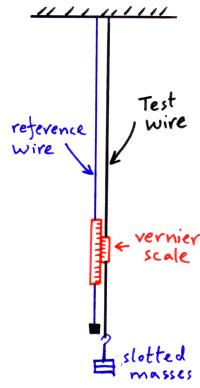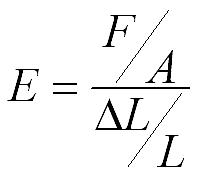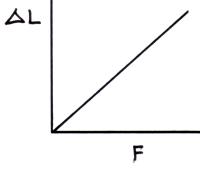What is a modulus?
A modulus is a numerical value, which represents a physical property of a material .
What is the Young Modulus?
It is the modulus of elasticity. This means it is a number which represents how easy it is to deform (stretch a material).
When a material is stretched stress is directly proportional to strain provided it is not stretched beyond the limit of proportionality. The gradient of the graph below gives us the value of the Young Modulus for that particular material.
- E = the young modulus in pascals (Pa)
- F = force in newtons (N)
- L = original length in metres (m)
- A = area in square metres (m2)
- DL = change in length in metres (m)
Measurement of the Young Modulus
 The Young Modulus for a wire can be measured using this equipment. The reference wire and test wire are hung from the ceiling. The reference wire supports a vernier scale which will measure the extension of the test wire. The force on the test wire can be varied using the slotted masses.
The Young Modulus for a wire can be measured using this equipment. The reference wire and test wire are hung from the ceiling. The reference wire supports a vernier scale which will measure the extension of the test wire. The force on the test wire can be varied using the slotted masses.
Measurements needed;
1) The original length of the test wire (L) should be measured with a tape measure.
2) The cross-sectional area (A) can be calculated from measuring the wires diameter with a micrometer. The micrometer should be used to measure the diameter at several different points along the wire.
3) The test wire will have several different forces (F) applied using the slotted masses and each time the extension of the test wire (DL) will be measured using the vernier scale.
A graph of force against extension can be plotted from which the gradient can be calculated.
The Young Modulus can then be calculated from the gradient using the equation below.










